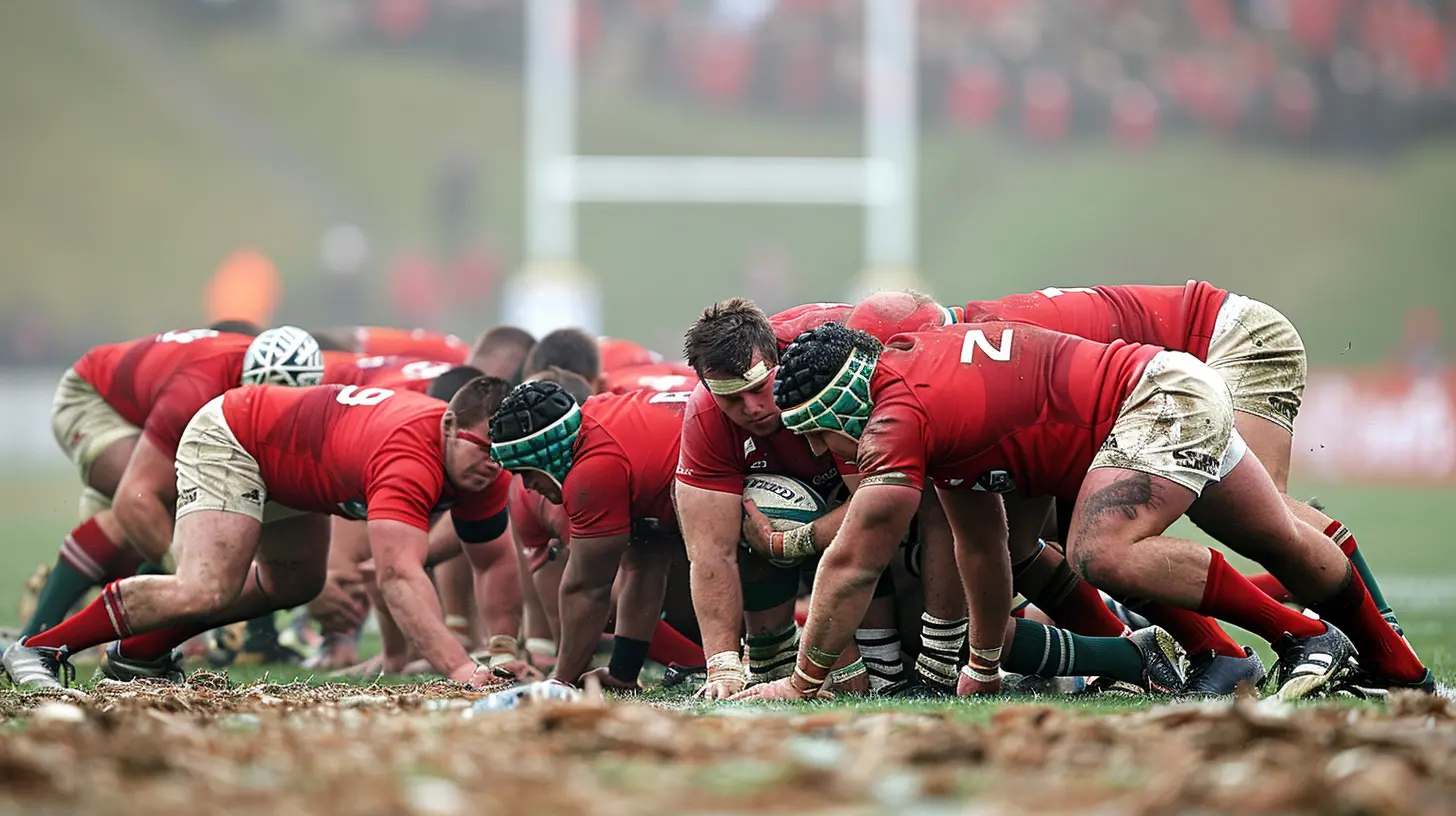Dissecting Rugbys Defensive Line Tactics
11 August 2025
Let’s face it—rugby isn’t just a chaotic mess of bodies smashing into each other. Beneath those big hits lies a subtle, chess-like strategy, especially when it comes to defense. The defensive line is basically rugby's backbone. If that line cracks, you're giving away tries like candy on Halloween. But when it's solid? You’re turning the pitch into a fortress.
So, grab your mouthguard (metaphorically), and let’s peel back the layers of rugby's defensive line tactics. Whether you're a player, a coach, or just trying to impress your mates at the pub, this breakdown’s got you covered.
What Is a Defensive Line in Rugby?
Before we dive deep, let's cover the basics. The defensive line is the wall of players that stretches across the field, trying to shut down the opposition's attack. Sounds simple, right? Well, it’s anything but.The job of the line is to hold shape, move as one unit, and prevent any gaps for the opposing team to exploit. Think of it like a synchronized swim team, but with less grace and more grit.
The Fundamentals of a Solid Defensive Line
1. Spacing and Alignment
Imagine trying to blockade a road with five cones spaced 10 meters apart. Useless, right? Same with rugby. Defensive players must maintain the right spacing—close enough to shut down gaps but far enough to cover wider attacks.Misaligned? That’s basically rolling out the red carpet for an easy line break.
2. Communication Is King
In a fast-moving game like rugby, staying silent is almost criminal. The best defenses are the loudest ones. Players need to constantly call out who’s tackling who, point out overlaps, and alert others about possible mismatches.Basically, if you're not shouting, you're already behind.
3. Line Integrity and Cohesion
One player shoots up? Gap. One player hangs back? Gap. See the pattern?The line needs to move in one rhythm—up together, back together. If you've ever watched a marching band perform, it's that level of coordination (minus the flute solos).
Types of Defensive Systems
Here’s where things get interesting. Not all defensive lines are made equal. Depending on the style, coaches deploy different formations and systems. Let's break down the key ones.1. Drift Defense
This is the old-school favorite. The line moves sideways as the ball shifts across the field. The idea? Guide the attack towards the sideline (aka the ultimate defender—hello, touchline).Pros:
- Conserves energy
- Covers overlaps well
Cons:
- Risky if the attacker cuts back inside
- Can be too passive against aggressive runners
2. Blitz Defense (or Rush Defense)
The pitbull of defensive systems. In this one, defenders charge up quickly to shut down space and force errors. It relies on speed, timing, and nerves of steel.Pros:
- Pressures the opposition
- Forces rushed decisions
Cons:
- Vulnerable to well-timed kicks behind the line
- One missed tackle? Trouble.
3. Man-On-Man Defense
Simple on paper: you take your man, I take mine. This system matches each defender with a specific attacker.Pros:
- Clear individual responsibility
- Easy to implement
Cons:
- Needs solid 1-on-1 tackling
- Can break down if support play is strong
Key Roles Within the Defensive Line
Every player has a job. Let’s zoom into who does what when it comes to defending.Front Row
These big lads aren’t just scrummaging machines. In defense, they usually patrol the center of the field. Their job? Smash runners and clean up anything messy.Back Row
The unsung heroes. They're the glue between the forwards and backs. Agile, alert, and always hunting for those turnovers at the breakdown.Halfbacks (Scrum-Half & Fly-Half)
These guys often marshal the defense. Their communication and positioning are vital—spotting threats and plugging holes.Centers
Key to the defensive spine. They often decide whether to drift or blitz. If they make the wrong call, it's "Goodnight, Vienna."Back Three (Wingers & Fullback)
Your last line of defense. They cover kicks, chase attackers, and shut down wide threats. The fullback especially needs to read the play like a novel.Reading the Attack: Anticipation Over Reaction
Here’s a little secret: good defenders don’t react—they anticipate. It’s like choosing whether to catch a punch or dodge it. One hurts more.Smart defenders watch the hips, not the shoulders—shoulders can lie, hips can’t. They read formations, recognize decoys, and sniff out plays before they happen.
You’ve probably heard the phrase "rugby IQ" tossed around. This is where it shows up big time.
Defensive Line Speed: The Silent Killer
Speed isn't just about chasing attackers. It’s how quickly the line moves forward after a ruck. The faster the line gets up, the less time the attack has.But here's the kicker: speed without control is like driving a Ferrari with no brakes. You can’t just blitz every play. It has to be calculated.
Teams often mix up their line speed—sometimes blitzing to apply pressure, other times holding back to bait the attack into a trap.
Adapting to Situations: Dynamic Defending
Let’s not pretend rugby is rigid. It's messy. Fatigue sets in. The wind picks up. The opponent changes tactics. So, your defensive line needs to be flexible.A smart team will tweak their system mid-game—switching from drift to blitz, bringing the winger inside, or crowding the breakdown.
Being able to adapt isn’t just a bonus—it’s essential.
Counter-Defense: Turning the Tables
Great defense doesn’t just stop tries—it sets up counters.Ever heard of a turnover try? That’s when a team defends like demons, steals the ball, and scores from it. It’s like flipping the script in a movie plot.
To pull this off, you need:
- Quick support players
- A fullback with vision
- Forwards who can pass and run like backs
Defense isn’t just a brick wall; it’s a springboard.
Drills for a Rock-Solid Defensive Line
Want to build a beastly line? You’ve gotta train like one. Here are a few workouts that top teams swear by:- Shadow Defense: No ball, just movement. Players practice shifting together like a pack of wolves.
- Breakdown-to-Line Drill: Re-set the line after a ruck—over and over again—until it's muscle memory.
- 1v1 Tackle & Recover: Teaches players to make the hit and bounce back into formation fast.
- Communication Circuits: Encourages players to call out threats, names, and directions during simulation drills.
Do these consistently, and your defense will go from paper mache to titanium.
Common Mistakes That Shatter a Defensive Line
Even top-tier teams mess up. Here are some blunders to avoid:- Ball Watching: Follow your man, not just the ball. The moment you look infield, your opposite number is gone.
- Over-committing: Don’t shoot out of the line unless it’s a sure hit. Miss, and you’ve left the door wide open.
- Poor Re-alignment: After a tackle or ruck, dragging your feet to get back into place is a recipe for disaster.
- Lack of Talk: Silence signals confusion. Communicate relentlessly—it’s your oxygen on defense.
Psychological Warfare: Winning the Mental Battle
Never underestimate confidence. A team that believes in their defense becomes a wall you can't climb.When defenders constantly talk, clap, and celebrate big hits, it gets in the heads of attackers. Doubt creeps in. Mistakes follow.
Defense is as much mental as it is physical.
Final Thoughts
Dissecting Rugby's Defensive Line Tactics shows us one big thing: defense isn’t about standing in front of someone and hoping for the best. It’s precision, timing, teamwork, and trust.Every big hit, every turnover, every missed chance by the opposition—it all starts with a smart, synced-up line. So next time you're watching a game, don’t just follow the ball. Watch the defensive line move, adjust, and react. That’s where the real game is unfolding.
Because in rugby, as in life, defense wins battles.
all images in this post were generated using AI tools
Category:
TacticsAuthor:

Nelson Bryant
Discussion
rate this article
1 comments
Kristina McCoy
Defensive line tactics reveal the intricate dance between strategy, cohesion, and individual brilliance in rugby.
August 25, 2025 at 4:50 AM

Nelson Bryant
Thank you! Indeed, the interplay of strategy and individual skill in defensive line tactics is what makes rugby so compelling.


